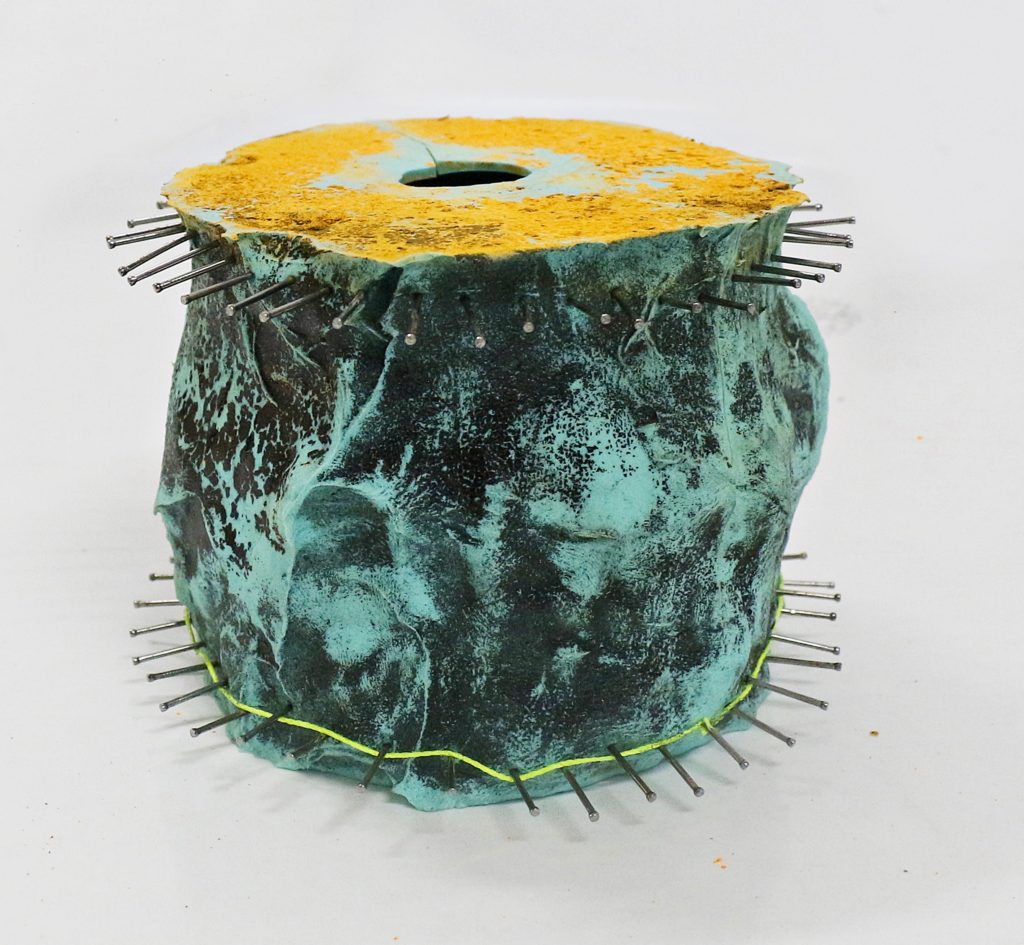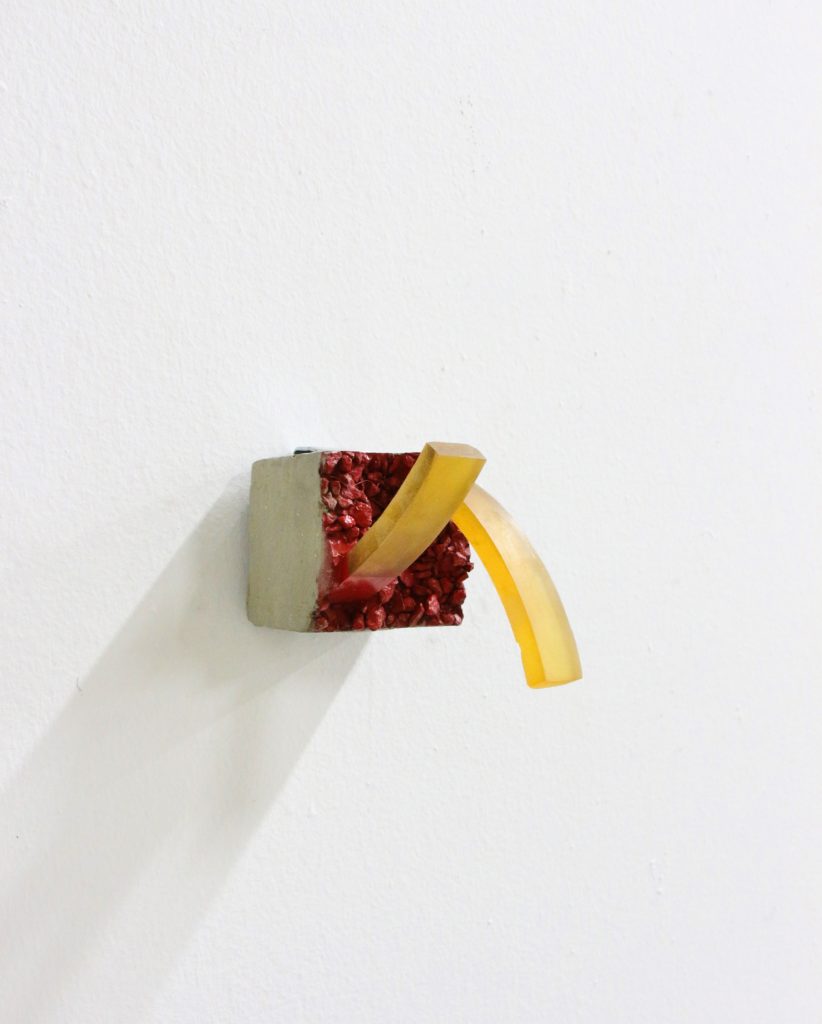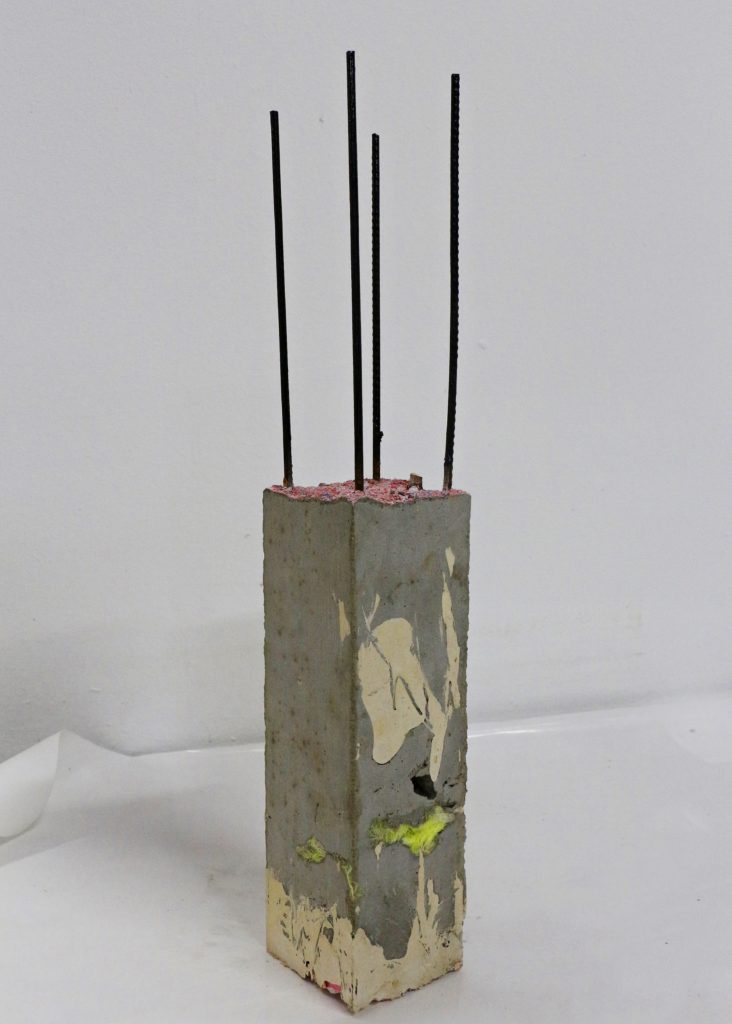Bruno Cesar Eder Giasson, known as Bruno Eder in the artistic field , was born in Caxias do Sul, Brazil, where he began to work with art since 2015. The young artist started in the art with drawing, using graphite and dry pastel. Soon after, he began to use oil painting and abstract and iconographic compositions, and also using reusable materials. Currently, Bruno manipulates from conventional materials such as paints and pigments to the unconventional ones, such as plaster, cement, steel, silica, caliça and others which are found in the street, separated for creation of objects.

The artist tells us that art has a need to be exercised daily. It is the materialization of thoughts and questions, a stimulus of creation and vision of the world. In his artistic process, Bruno starts from a sensitive relationship with his environment, observing his notes, sketch and collection of elements. In his creation, Bruno intends to convey the idea that the human being develops relationships and affections with the place that he is inserted and vice versa.
“In a very spontaneous way, I practice artistic nomadism and idleness in search of their own meanings in the elements and fragments of the landscape.”

In the Verdandi Project, Bruno took part in very deep way and he was worried about the outcome of his work. His conceptual maturity reverberates in every created object, making us curiously observe each one of them. Below, you can check the full artist’s statement:

“The fragmentary state is something that catches my attention, perhaps because the moments are fragments of time and my experience. My moments are dedicated to the artistic nomadism of enjoying spaces and walking through the city. The process starts from an extremely sensitive relationship with the environment, questioning the concepts of territory, space and place. Space is emptiness; place, experiences, significations and territory is the possessive, the human instinctive, the occupation, the specific.
This relationship is associated with photographic records, annotations, sketches, collection and appropriation of elements. Always attentive to the epiphany of the most subtle and petty things in life, I seek meaning in the elements and fragments of the landscape. I feel that my mind is free for any reason.
In creation I am interested in transmitting the idea that human beings develop relationships and affections with the place that is inserted and vice versa, through fragmented objects, unusual iconography, impossible perspectives and compositions that evoke human presence. It is this human habitation that makes spaces into identitary, relational and personalized places carried by elements that endow it with value.
The course on Architecture and Urbanism allows me to enjoy poetry and technique in a peculiar way, portraying, in contrast, a hostile architecture. The mixing and experimentation of materials such as paint, paper, concrete, plaster, silicon, steel, as well as visual memory, are part of my research as an artist.

In the production of some objects I use the reuse of caliça – I have empathy for these objects and I look for a resignification. It distorts its original function by redefining form: a distortion of the real world and interest in dystopic behavior. I observe the different configurations of the environment, create non-existent realities (metaphysical) and fictitious places. These objects belong to places of my unconscious. “
Bruno Eder brings in his art the questioning of space. Through sculptures the artist enters this question and composes bodies that appropriate this space and create a unique dialogue with each element that is there.
Bruno Eder brings in his art the questioning of space. Through sculptures the artist enters this question and composes bodies that appropriate this space and create a unique dialogue with each element that is there.
@VHMOR
